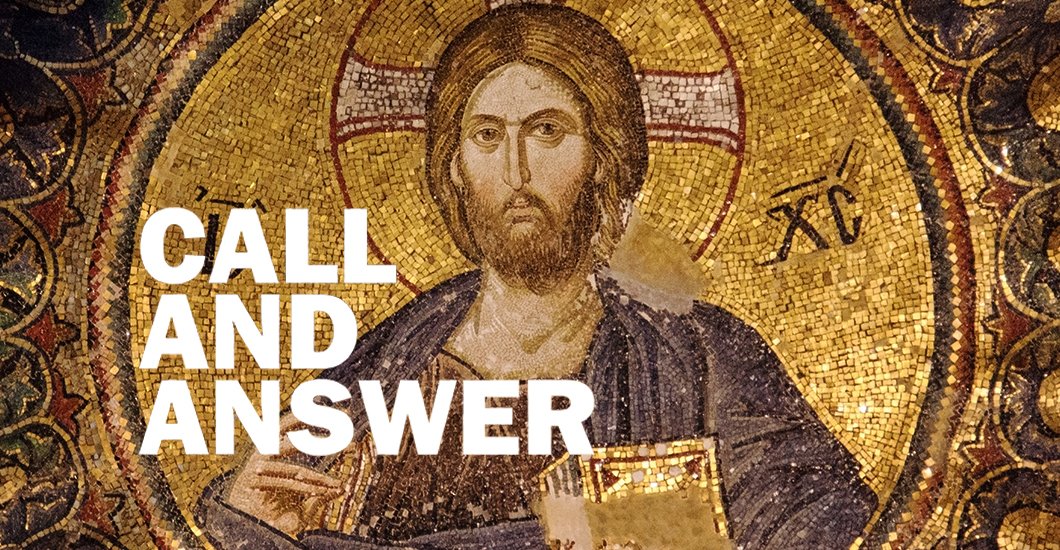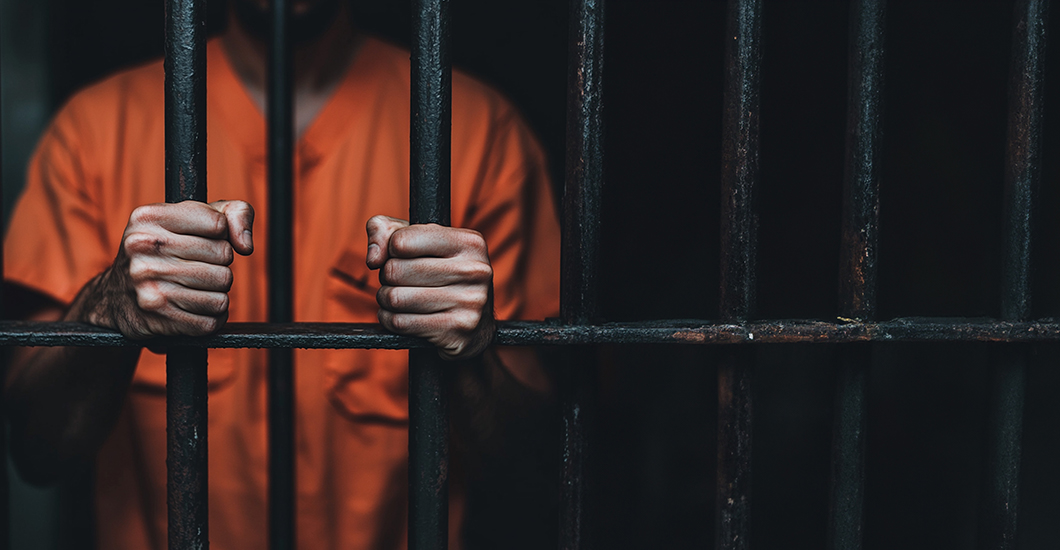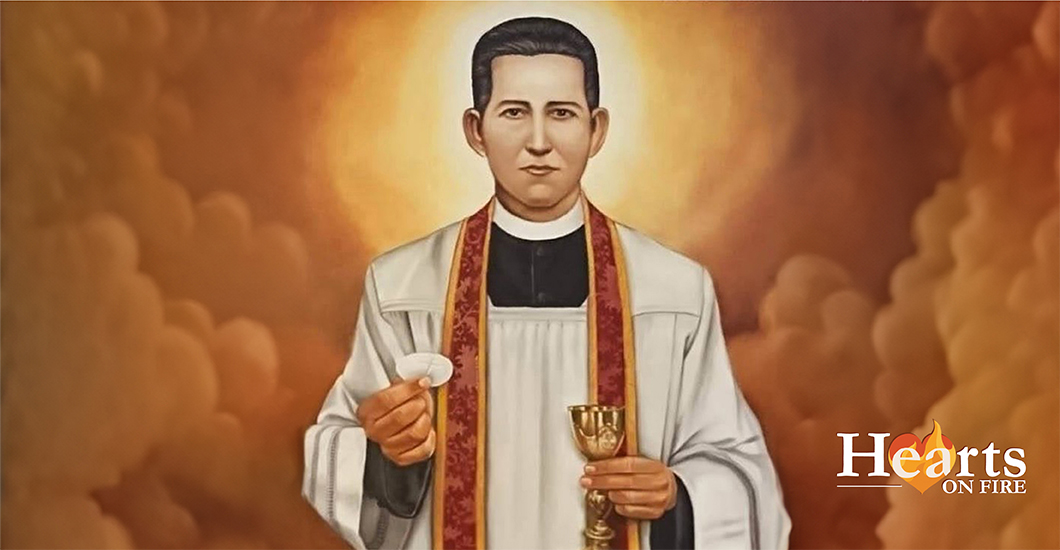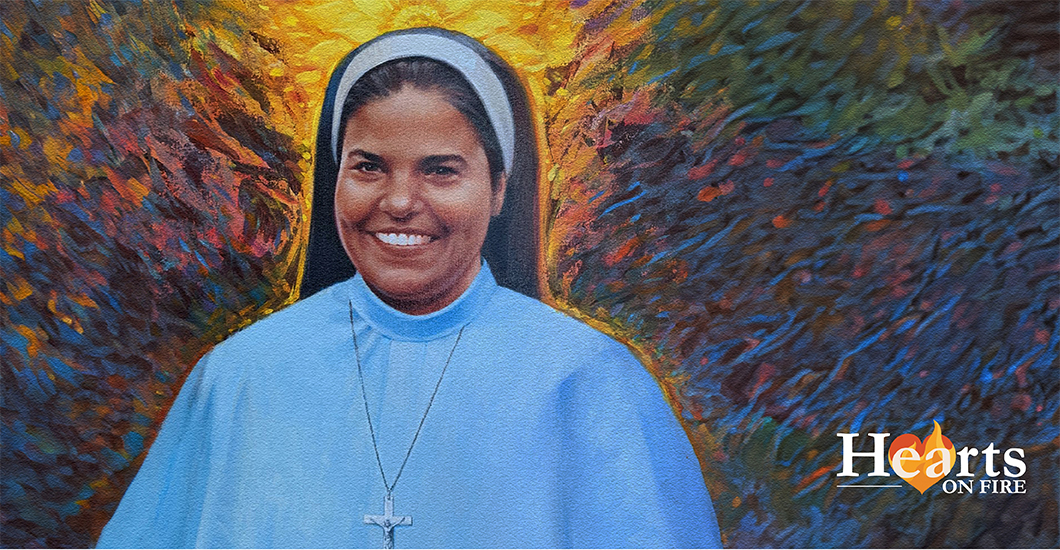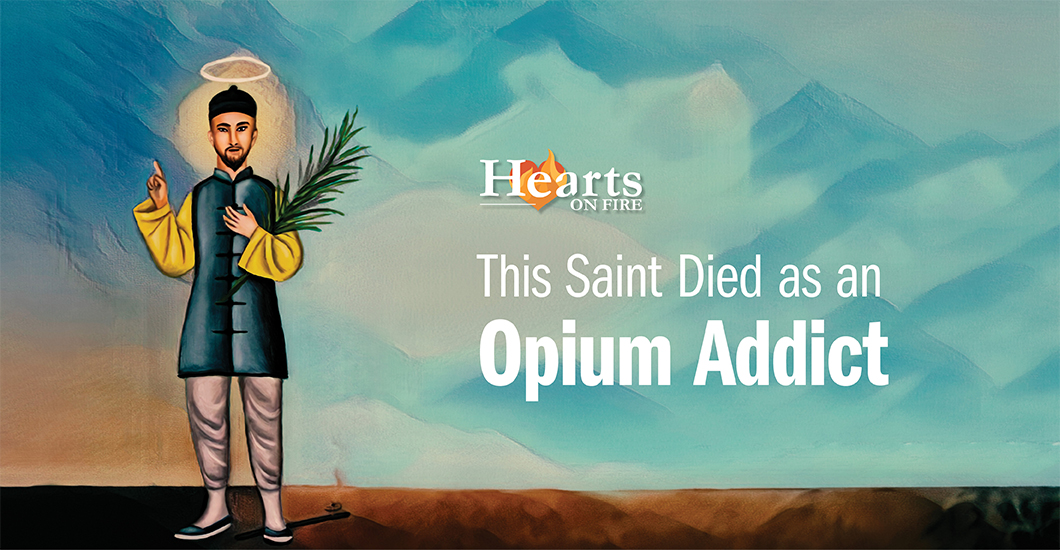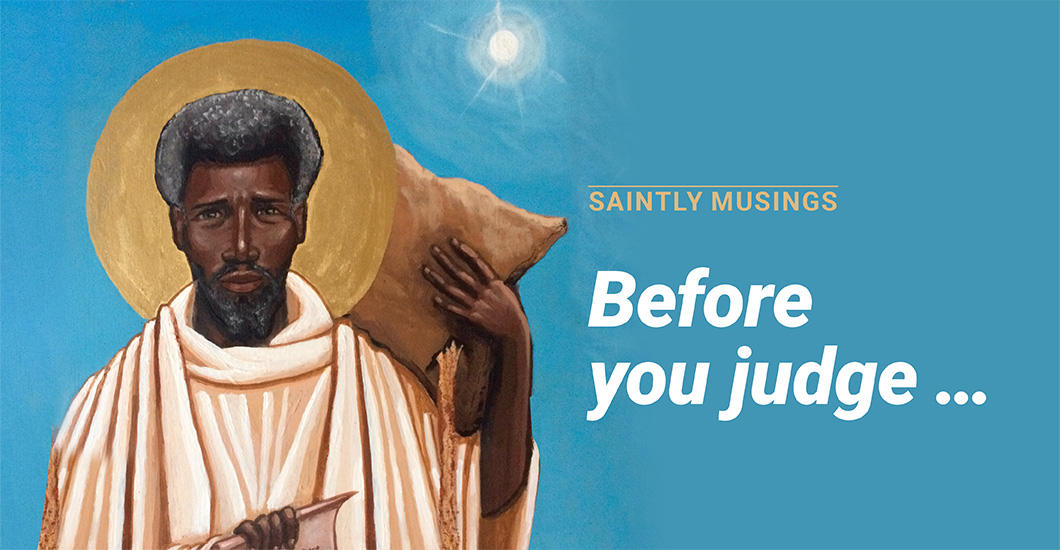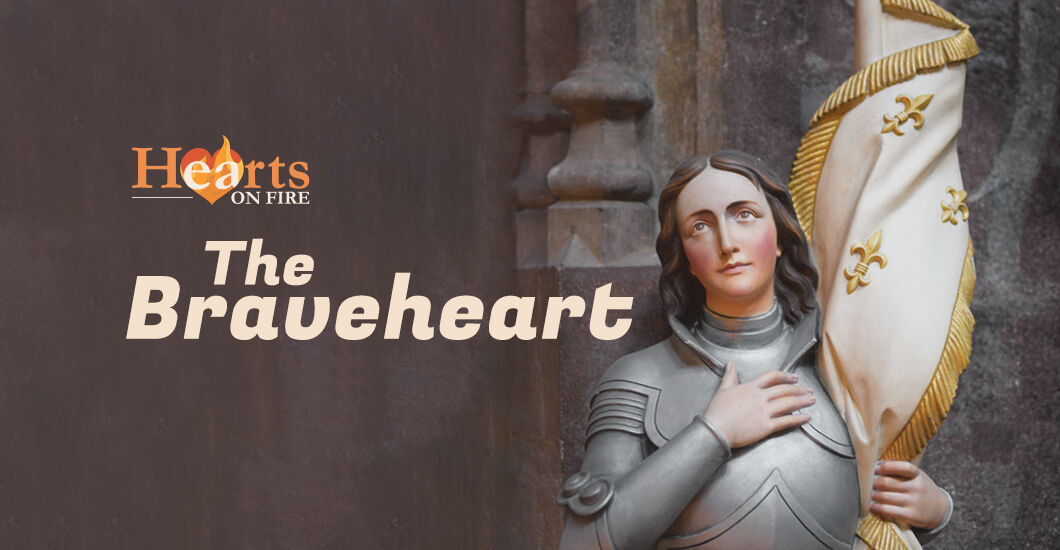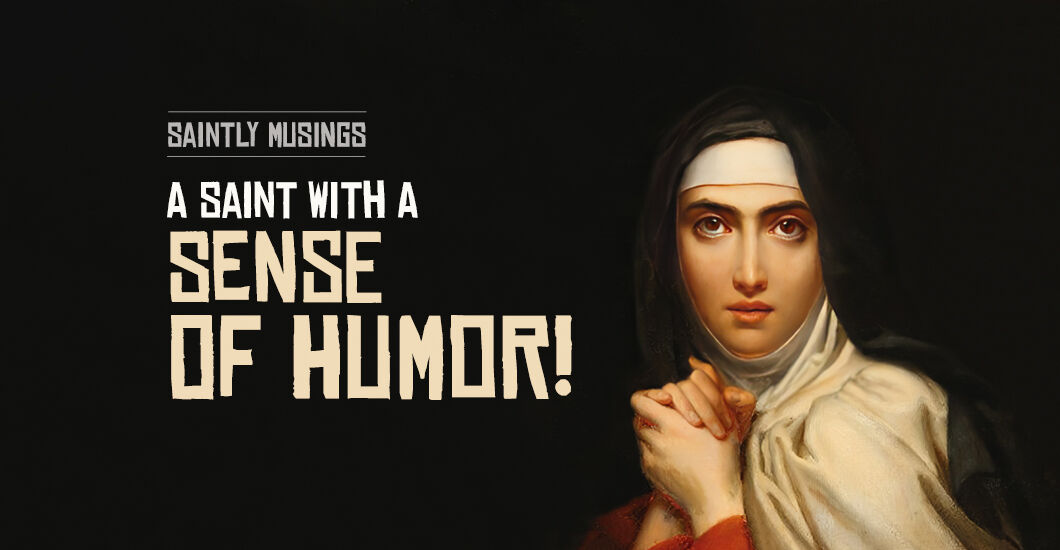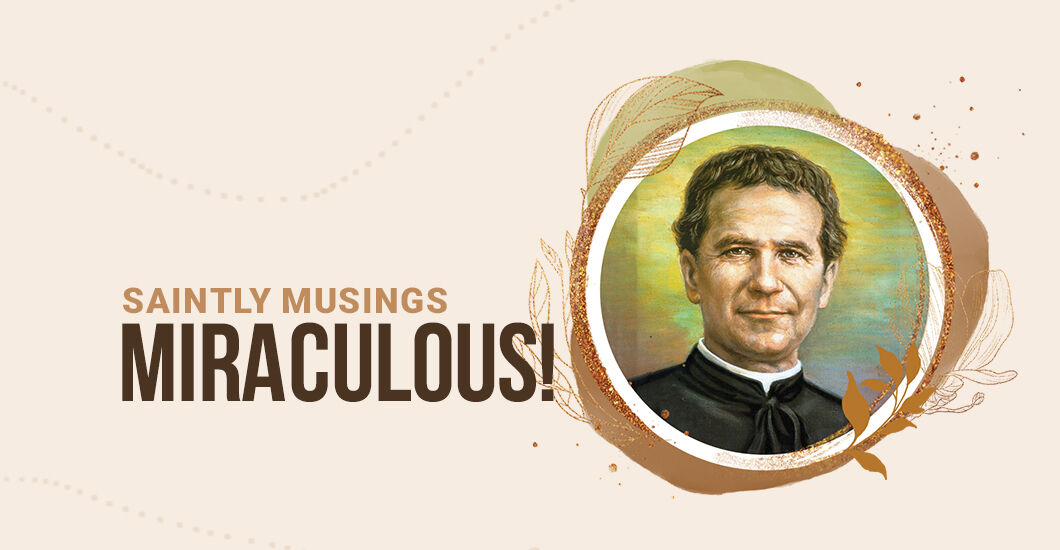Home/Evangelize/Article
Trending Articles
Call and Answer
Several years ago, I was given a housewarming gift unlike any I had ever received before. Christ the Pantocrator, an icon written and given to me by a most beloved friend. An exquisite, incredible work of art. It is a window into the soul of Our Blessed Lord, with its bright gold brush strokes surrounding and haloing the dark brown of Christ’s hair and stoic frame. It is, however, His eyes that seem to pierce right through the soul as one cannot help but gaze into them. A small crumb of Heaven, it is a great treasure, though it has become more to me than an object. It is an invitation, an encounter with the Divine right here in my little home.
If you grew up with or are accustomed to “art forms” such as Jesus at the Bat or Precious Moments, icons may at first seem rather serious and perhaps even a little drab to the malnourished eye, the nature of an icon being that of solemnity and profundity; but like many worthy and even acquired tastes, icons present a singular presence and awareness that no other art form can offer.
Brother Victor-Antoine D’Avila-Latourrette, a resident monk at Our Lady of the Resurrection Monastery in Millbrook, New York, says, “In the icon, there is never room for creative fantasy or a fancy imagination. In its austere sobriety, the icon and the iconographer never step beyond the Scriptures or the virtues of the holy person they represent. Icons are truly vehicles of prayer, for besides instructing us in the mysteries of the faith, they also embellish God’s house with the beauty of a mysterious supernatural presence. To pray daily before an icon is to become aware in a unique way of the presence it represents. During the veneration of icons, a daily experience in our monastic worship, prayerfully we come into physical and spiritual contact with the mystery or person portrayed in the particular icon. This powerful, intangible contact feeds not only our faith, but also our prayer and our piety.”
I remember placing it gently upon my mantel, thinking it a proper spot for such a piece of art. (Icons were something quite familiar to my upbringing as my mother also shared a friendship with the iconographer already spoken of above. In fact, it was her art that played a significant role in my mother’s “ongoing conversion,” as she used to call it, and to mine as well). I would walk past it in the mornings, blindly reaching for the coffee pot, and it seemed as if He was looking at me, present and yearning. A quaint hello was at the very least a polite response on my part to so longing and tender an expression of love. And then there would be the diaper changes before the fireplace, or the family prayers at night, and there He was again . . . waiting, hopeful, lovely, and so, so beautiful. I found myself falling deeply and truly in love with so loving a Face. A mere glance at His serene countenance would give me a gentle peace, a calm encouragement in my vocation.
It was not long after that, that my mother became ill. I do not just mean sick, but terminally ill. They gave us three to six months. The devastation of that kind of diagnosis goes beyond expression. I spent much time in confusion, pain, and fear. Sometimes I went for what seemed like days without sleep, hovering over her sickbed; at other times, I felt I that I could not get out of bed. And as I would gather my belongings to go out the door to the hospital, my eyes would turn to that icon. There He was. He was always there. I would take Him with me, in my heart, a little oratory within of that beautiful, serene Presence. And when I came home at three o’clock in the morning some days, He was still there, as if He had never left my side. Little by little, I let Him enter in—and He came, never demanding, never threatening, but softly, peacefully, and oh, so gently. My love grew, as did mom’s cancer and when she finally died, He was there still. My Beloved: before me, beside me, above me, within me, around me.
I do not know if I could have come out of that tragedy with the peace and joy that I feel today had it not been for that little icon. His presence filled my soul with a courage that even others were aware of and often inquired of me about. That daily, small, divine invitation produced spiritual fruit that I have no doubt will last my whole life, and continues to be fruitful each and every day. It is not something that you can experience in a Precious Moments image. The icon transcends the timeline of history, as our gaze reaches into the heights of Heaven, giving us renewed strength, determination, and a willingness to fulfill our earthly obligations with profound hope and an unspeakable joy in God Almighty.
Do you have icons in your home? Do you make time each day to have even a small encounter with the Divine Romance? Consider purchasing an icon, perhaps of Our Lord or His Blessed Mother, and place it in a prayer corner within your home. Go there, in times of joy and especially in times of sorrow. He will be there. He will always be there, giving you strength, stability, tender love, and hope. I can attest to this reality in my own little life.
Heidi Bock is the found of Brave New Family (www.bravenewfamily.net). Reprinted with permission.
Related Articles
The Mexican Revolution which began in the early 1920s, led to the persecution of the Catholic community in that country. Pedro de Jesus Maldonado-Lucero was a seminarian at that time. Once he became a priest, despite the risk, he stood with his people. He tended to his flock during a terrible epidemic, founded new apostolic groups, reestablished associations, and ignited Eucharistic piety among his parishioners. Upon discovering his pastoral activities, the government deported him, but he managed to return and continue serving his flock, in hiding. One day, after hearing the confessions of the faithful, a gang of armed men busted his hiding place. Father Maldonado managed to grab a reliquary with Consecrated Hosts as they forced him out. The men forced him to walk barefoot throughout the town, as a crowd of the faithful followed him. The city mayor grabbed Father Maldonado's hair and dragged him toward the city hall. He was knocked to the ground, resulting in a skull fracture that popped out his left eye. He had managed to keep his grip on the pyx until this time, but now it fell out of his hands. One of the thugs took some Holy Hosts, and as he forcefully stuffed the hosts inside the priest’s mouth, he shouted: “Eat this and see if He can save you now.” Little did the soldier know that just the night before, during the Holy Hour, Father Maldonado had prayed that he would happily give his life for an end to the persecution ‘if only he would be allowed to take Communion before his death.’ The thugs left him for dead in a pool of his own blood. Some local women found him still breathing and rushed him to a nearby hospital. Father Pedro Maldonado was born into eternal life the next day, on the 19th anniversary of his priestly ordination. Pope John Paul II canonized this Mexican priest in 2000.
By: Shalom Tidings
MoreRani Maria Vattalil was born on 29 January 1954 to Eleeswa and Paily Vattalil in a small village called Pulluvazhy, in Kerala, India. From a young age, she was brought up in the Christian faith, having love for the poor. She attended daily Mass and led family prayers. During the final year of high school, Rani felt the Lord calling her to consecrated life and entered the Franciscan Clarist Congregation in 1972. It was Rani Maria’s ardent desire to do missionary work in North India and serve the poor, even if it cost her life. She was sent to Madhya Pradesh (a central Indian state) and served several mission areas there. Sister Rani Maria was given the responsibility of coordinating the social apostolate of the local diocese. She organized various educational programs for children and young people and worked relentlessly to empower the indigenous people. She understood how the poor, illiterate farmers were exploited and taken advantage of by their landlords. So, she educated them on their rights, helped them fight for justice, and spoke for those who were unjustly imprisoned. All this infuriated the upperclass landlords, who threatened her with dire consequences if she continued supporting the cause of the poor. But Rani Maria feared nothing and did not back down from her mission to 'love her neighbor.' A devious plan was then hatched by those who hated her. On 25th February 1995, while traveling by bus, she was mercilessly stabbed 54 times by Samundhar Singh—a man hired by the landlords. She breathed her last, repeating the Holy name of Jesus. Rani Maria worked her entire life to fight for the dignity and rights of her fellow men and bore witness to the Gospel through her social activities. Sister Rani Maria’s family, following the valiant example of their daughter, forgave her murderer wholeheartedly, even inviting him to their home! This act of mercy touched him deeply; he repented of his heinous crime and became a changed man. Sister Rani Maria was beatified by Pope Francis on 4th November 2017.
By: Shalom Tidings
MoreMartin de Porres was born in 16th-century Peru; he grew up facing the stigmas of both his mixed race and illegitimacy. After a barber-medical apprenticeship in his young years, he joined the Dominicans as a ‘lay helper’ and continued his barber work in the monastery. One day, Brother Francis Velasco Carabantes approached Martin, desiring to talk to this man whom people were already starting to believe was saintly. Martin was busy with his barber work; he absent-mindedly grabbed this novice and placed him in the barber’s chair. Brother Francis had no inclination to have his head shaved; he disliked the hairstyle that the Dominicans used. Before he could resist, Martin had finished his job, and Brother Francis was angry beyond expression. He started to shout, calling Martin all sorts of curse words. Martin was lost in prayer, and by the time he noticed that this novice was shouting, one of the rectors had seen the commotion and was scolding Brother Francis, who was severely punished and sent away. Martin, once he came to realize what had happened, went to the rector with all possible excuses. He begged forgiveness for this person who had verbally abused him, trying even to explain away the curse words used. Finally, he told the rector: “Everyone knows what a sinner I am.” The rector, who was aware of Martin’s saintly life, gave in to his request and forgave Brother Francis. Not satisfied with this, Brother Martin even sent fresh fruit, which was a rare delicacy in the monastery, to Brother Francis. How many times have we rejoiced in the ‘just’ punishments that our transgressors received? Let us pray to Saint Martin for the virtue of humility, to forgive and show the other cheek, as Jesus taught us to do.
By: Shalom Tidings
MoreOn a scorching afternoon on the streets of Calcutta, I met a boy… Prayer is an undeniable, central, and key part of every Christian’s life. However, Jesus emphasized two more things which clearly went hand in hand with prayer—fasting and almsgiving (Matthew 6:1-21). During the seasons of Lent and Advent, we are specifically called to commit more time and effort to all three ascetic practices. ‘More’ is the important word. Whatever season we are in, radical self-denial and giving are a continuous call for each baptized believer. Around eight years ago, God literally made me stop and think about it. Unexpected Meeting In 2015, I had the great privilege and blessing of fulfilling a lifelong dream to be with and serve some of the most in-need brothers and sisters worldwide in Calcutta, India, where the poor are described not only as poor but the ‘poorest of the poor.’ From the moment I landed, it was as though electricity was running through my veins. I felt such immense gratitude and love in my heart to be given this amazing opportunity to serve God with Saint Mother Teresa’s religious order, the Missionaries of Charity. The days were long but absolutely action-packed and grace-filled. Whilst I was there, I did not intend to waste a moment. After a 5 AM start to each day with an hour of prayer, followed by Holy Mass and breakfast, we set off to serve at a home for the sick, destitute, and dying adults. During the break at lunchtime, after a light meal, many of the religious brothers I was staying with took a siesta to recharge their batteries, to be ready to go again in the afternoon and on into the evening. One day, instead of having a rest in the house, I decided to go for a walk to find a local internet café, to contact my family by email. As I turned one of the corners, I encountered a young boy aged around seven or eight years old. His face expressed a mixture of frustration, anger, sadness, hurt, and tiredness. Life had already seemed to have begun to take its toll on him. He was carrying over his shoulder the biggest transparent, heavy-duty plastic bag that I had seen in my life. It contained plastic bottles and other plastic items, and it was full. My heart broke within me as we stood silently examining one another. My thoughts then went to what I could give this young boy. My heart sank, as I reached for my pocket, realizing that I only had a small amount of change with me to use for the internet. It added up to less than one pound in English money. As I gave it to him, looking him in the eye, his whole being seemed to change. He was so lifted and grateful, as his beautiful smile lit up his beautiful face. We shook hands, and he walked on. As I remained standing in that back street of Calcutta, I stood in awe as I knew that the Almighty God had just personally taught me such a powerful life-changing lesson through this encounter. Reaping Blessings I felt God had beautifully taught me in that moment that it is not the actual gift that is important but the disposition, intention, and love from the heart with which a gift is given. Saint Mother Teresa beautifully summed this up saying, “We cannot all do great things, but we can do small things with great love.” Indeed, Saint Paul said, if we give away all we have “but have not love,” we gain nothing (1 Corinthians 13:3). Jesus describes the beauty of giving, that when we “give… it will be given to you; good measure, pressed down, shaken together, running over, will be put into your lap. For the measure you give will be the measure you get back.” (Luke 6:38). Saint Paul also reminds us that “Whatever a man sows, that he will also reap” (Gal 6:7). We do not give in order to receive, but God in His infinite wisdom and goodness blesses us personally in this life and also in the next when we step out in love (John 4:34-38). As Jesus taught us, “it is more blessed to give than to receive” (Acts 20:35).
By: Sean Booth
MoreThe Chinese Boxer Rebellion in the 1900s killed nearly 32,000 Chinese Christians and 200 Western Missionaries. Among these devoted Christians who gave their life for their faith, Saint Mark Ji Tianxiang stands out because, at the time of his death, he was an opium addict who had not received the Sacraments for 30 long years. Ji was raised in a devout Christian family, and he was a respected and charitable doctor in his community. Fate be blamed, the opium he took to abate a disturbing stomach ailment took hold over him, and he was addicted to it in no time. Though he went to frequent Confession, Ji found himself in the grips of a powerful addiction that refused to succumb to any means of resistance. His parish priest and confessor eventually told him that he could not continue to repeat the same sin in Confession anymore. Confession requires a conscious resolve to repent and sin no more, and this repeated sin, in the 19th century, was not understood as an illness. He was henceforth restricted from receiving the Sacraments, but he continued visiting the Church and stayed true to the Lord’s ways. He remained sincere to his faith because He believed in a Merciful Father. Many assumed that he would be the first to deny the Lord when faced with the threat of persecution. But along with his son, grandchildren, and daughters-in-law, he persevered till the very end. In fact, Ji provided spiritual consolation to his fellow Christians as they were imprisoned and awaiting execution. Stories record that as they were dragged to prison, his grandson, shaking with fear, asked him, “Grandpa, where are we going?” He calmly and jubilantly answered: “We’re going home.” He went to his death, singing the Litany of the Blessed Virgin Mary. Pope John Paul II canonized him in the year 2000.
By: Shalom Tidings
MoreEver heard of a robber who turned into a Saint? Moses the Black was a leader of a band of thieves who attacked, robbed, and murdered travelers in the Egyptian desert. The very mention of his name spread terror in people’s hearts. On one occasion, Moses had to hide in a monastery and was so amazed at the way he was treated by the Monks that he converted and became a monk! But the story doesn’t end there. Once, four of the robbers of his former band descended upon the cell of Moses. He had lost none of his great physical strength, so he tied them all up. Throwing them over his shoulder, he brought them to the monastery, where he asked the Elders what to do with them. The Elders ordered that they be set free. The robbers, learning that they had chanced upon their former ringleader and that he had dealt kindly with them, followed his example: they repented and became monks. Later, when the rest of the band of robbers heard about the repentance of Moses, they also gave up their thievery and became fervent monks. After many years of monastic struggles, Moses was ordained deacon. For another fifteen years, he continued his monastic labors. About 75 disciples gathered around the saintly Elder, who had been granted the gifts of wisdom, foresight, and power over demons by the Lord. Once, a certain brother committed an offense in Scete, the camp of the monks. When a congregation was assembled to decide on this matter, they sent for Abba Moses, but he refused to come. Then they sent the priest of the church to him, imploring, “Come, for all the people are expecting you,” and finally, he responded to their pleas. Taking a basket with a hole in it, he filled it with sand and carried it upon his shoulders. Those who went out to meet him asked, “What does this mean, O Father?” And he replied, “The sands are my sins, which are running down behind me, and I cannot see them. Yet, I have come here today to judge shortcomings that are not mine.” When they heard this, they set that brother free and said nothing further to him.
By: Shalom Tidings
MoreAt the age of 20, Anthony lost his parents and was left with a large inheritance and the responsibility of caring for his sister. About the same time, Anthony happened to hear a reading from the Gospel of Matthew, where Jesus tells a rich young man, "If you want to be perfect, go and sell everything you have and give the money to the poor." Anthony believed he was that rich young man. Shortly after, he gave away most of his property, sold almost everything else, and kept only what he needed to care for himself and his sister. But that’s not exactly what the Lord had commanded! Not long afterward, Anthony was at Mass once again and heard the Gospel passage, “Do not worry about tomorrow; tomorrow will take care of itself” (Matthew 6:34). Again, he knew Jesus was speaking directly to him, so he gave away even the little he had saved, entrusted his sister to the care of some holy women, and entered the desert to live a life of poverty, solitude, prayer, and mortification. In that harsh desert landscape, the devil attacked him in countless ways saying “Think about all the good you could have done with that money you gave away!” Firm in prayer and mortification, Anthony fought off the devil and his manifestations. Many were attracted to his wisdom, and these he encouraged to seek self-denial and the hermetic life. No wonder after his death he became Saint Anthony the Great or Saint Anthony of the Desert, the father of Christian Monasticism. Once a brother renounced the world and gave his goods to the poor, but he kept back a little for his personal expenses. He went to see Abba Antony. When he told him this, the old man said to him, "If you want to be a monk, go into the village, buy some meat, cover your naked body with it and come here like that." The brother did so, and the dogs and birds tore at his flesh. When he came back the old man asked him whether he had followed his advice. He showed him his wounded body, and Saint Antony said, "Those who renounce the world but want to keep something for themselves are torn in this way by the demons who make war on them."
By: Shalom Tidings
MoreFew Saints of the Catholic Church have captured the popular imagination like Joan of Arc. Her story is depicted in paintings, sculptures, and numerous films. Born into a peasant family in 1412, Joan grew up illiterate, but acquired a profound love for the Church and a deep faith in God from her mother. Because she loved prayer and the sacraments, her neighbors said, “She was so good that all the village loved her.” She cared for the sick and homeless, often even giving them her own bed. By the age of thirteen, Joan began to hear the voices of Michael the Archangel, Saint Margaret of Antioch, and Saint Catherine of Alexandria. They told her she was to liberate France and ensure the French heir to the throne was installed as France’s rightful king. She won his trust by telling him details of his past only someone with divine knowledge could know. At the time, France was dominated and ruled by England. Convinced that her “voices” came from God, Joan heroically and faithfully obeyed their instruction, despite obstacles and suffering. Prayer and contemplation remained primary in her life even as she led battles, during which she never raised the sword against an enemy Though two years earlier a commission had “declared her to be of irreproachable life, a good Christian, possessed of the virtues of humility, honesty and simplicity”, Joan was accused of witchcraft and heresy after the English captured her, receiving no support from the very King she put on the throne. At her trial, Joan manifested her deep faith and wisdom, and despite being wrongly condemned, she never lost her faith in God or the Church. When she was burned at the stake, she proclaimed the name of Jesus while holding a crucifix to her heart, causing an observer to say, “We have burned a saint.” Her death increased her fame and popularity. Twenty years later, a new trial declared her innocent of all her alleged crimes. After her reputation grew over the centuries to epic proportions, Joan was beatified in 1910 by Pope Pius X and canonized eleven years later by Pope Benedict XV. She is now the patron Saint of France and one of the Church’s most beloved Saints. Joan’s obedience to God ensured France kept the Catholic faith during the Protestant Reformation while England abandoned it. France remained a solid center of Catholicism from which it would spread to northern Europe.
By: Shalom Tidings
MoreThe river had swelled so high that water covered everything and all sense of where the road or footpath might be was purely a guess. With water everywhere, it seemed foolish to advance, especially in a carriage, for if anyone strayed ever so little off the road, they would perish without a doubt. As her companions panicked, Sister Teresa encouraged them, “As we are engaged in God’s work, how could we die in a better cause?” She then led the way on foot to the convent through the fierce storm. Suddenly she slipped down an embankment and fell squarely into the mud. Instead of complaining or cursing, the irrepressible nun, looked to the sky and quipped, “If this is how you treat your friends, no wonder you don’t have many!” The sixteenth-century Saint and Doctor of the Church, Teresa of Avila, didn’t take herself or this world too seriously and brushed off the little hardships of life with a sense of humor. Her ability to humbly recognize her own faults and need for grace was also tinged with her refreshing humor. In her autobiography, Teresa writes, “Having virtuous and God-fearing parents would have been enough for me to be good if I were not so wicked.” Saint Teresa was also mindful of false piety and once said, “From silly devotions and sour-faced saints, good Lord, deliver us!” A healthy and good sense of humor will keep our head straight and enable us to see the world’s true beauty. Did God say that we need to be “sour-faced” to be holy? So, if you want to become a saint, lighten up, share the joy of the Lord and laugh with your friends like Jesus did.
By: Shalom Tidings
MoreMaria Stardero, a 12-year-old girl, was led by her aunt into the church where dozens of boys were standing about or kneeling in prayer as they waited for Don Bosco to arrive for confessions. As she made her way to a pew, some of the boys noticed that the young girl’s eyes had no corneas and resembled white marbles. When Don Bosco arrived, he asked the girl about her condition. She had not been born blind, she told him, but because of eye disease she had completely lost her sight two years earlier. When he inquired about medical treatment, her aunt began to sob. They had tried everything, but doctors had only one thing to say: “It is incurable!” “Can you tell whether things are big or small?” Don Bosco asked the child. “I can’t see anything.” He led her to a window to see if she could perceive light, but she couldn’t. “Would you like to see?” Don Bosco asked. “Oh, yes! It’s the only thing I want,” said the girl, breaking down in tears. “Will you use your eyes for the good of your soul and not to offend God?” “I promise I will, with all my heart!” “Good,” said Don Bosco. “You will regain your sight.” After recourse to Mary, Help of Christians, Don Bosco recited the Hail Mary and blessed the girl. Then holding a medal of Mary Help of Christians before the girl’s eyes he asked, “For the glory of God and the Blessed Virgin, tell me what I’m holding in my hand.” “She can’t . . .” the elderly aunt began, but Don Bosco paid no heed. After a few seconds, the child shouted, “I see!” Immediately she described the medal in great detail. But when she stretched out her hand to receive it, it rolled into a dark corner. The aunt moved to retrieve it, but Don Bosco motioned her back. “Let her find it to see if the Blessed Virgin has thoroughly restored her sight,” he insisted. Immediately, the girl walked to the dark corner and bent down to retrieve the tiny object. As the many witnesses looked on, awed and profoundly moved, Maria, thanked Don Bosco profusely and with sobs of great joy. Entrust everything to Jesus in the Blessed Sacrament and to Mary, Help of Christians and you will see what miracles are! Saint John Bosco
By: Shalom Tidings
MoreLatest Articles
Christmas comes with the reminder of getting gifts for everyone, but is it really the gift that matters? Browsing in a local Christian bookstore many years ago with my boyfriend at the time, our eyes landed on a particular picture at exactly the same moment. It was a large, colorful depiction of Jesus, entitled The Laughing Christ; with His head tossed back slightly, somewhat disheveled, dark brown hair framed crinkled eyes, twinkling with delight! It was perfectly enchanting! We found ourselves staring at the slightly crooked smile beneath the subject of the portrait's engaging gaze. Oh, so inviting! So accepting! So attractive! Glancing up from this likeness toward each other, we shared the excitement the other felt at discovering this unique presentation of the person we had each come to know and trust in the last few years. We were both raised with statues and pictures of Jesus in our respective homes, but He was always portrayed as serious, somehow detached from life as we knew it. While we believed the person represented in these images had truly lived on this earth and even prayed to Him when we needed something, our faith individually had recently become something very real...alive, even. This artist’s impression reflected who we both discovered the Lord to be in our lives—someone with whom we could share life, someone who loved us in ways we had never known before, someone who revealed Himself to us when we prayed. As a result, our understanding of God was transformed from merely an intellectual assent of His existence to a new experience of a living, communicative, and wonderful friend; our very best friend. Even as we left the store a little while later, our animated conversation about this portrayal continued. It captured each of our hearts, yet neither of us had made a move to purchase it. As soon as I got home, I knew I had to go back and buy this picture. A few days later, I did just that, then carefully wrapped it, and waited excitedly for Christmas to arrive. Gift of Honor The days passed till finally, it was Christmas Eve. With carols playing in the background, we sat on the floor near the small straggly artificial tree given to me by my mother. Handing my gift to my beloved, I waited expectantly to hear his appreciation as he spied the new wristwatch I had placed on the paw of the little stuffed dog who would cleverly deliver the timepiece. A mumbled “thanks” was all the response I got. No worries, that wasn't the gift that I knew would be perfect. But first, I was to open his gift to me. Reaching to accept it, I felt a bit puzzled. It was large, rectangular, and flat. As I began to open it, pulling the wrapping paper away from the present, I suddenly saw...my picture?! The same one I secretively purchased for him? Yes, that was it! The Laughing Christ. The picture I loved so much but instead of being thrilled, I felt disappointed. This was supposed to be his present. The one I knew was exactly what he wanted. I tried to hide my disappointment, leaning over to give him a kiss while expressing my appreciation. Then pulling out the present I had carefully wrapped and hidden behind the tree, I gave it to the object of my love. He opened it, ripping the paper quickly, revealing the contents of the package. His face looked happy...didn't it? Or was it a bit crestfallen like I had felt mine would have looked if I hadn't worked so hard to hide my disappointment from him when it had been my turn to open a gift? Oh, we both said the all right words, of course, yet somehow we sensed the gift we received from each other was not nearly as meaningful to us as we had hoped. It was the giving of that present that we both looked forward to with such anticipation. It reflected the Christ we’d both experienced and our desire was to share who we each had come to know. That was where the joy was found, not in having our own desires met, but in fulfilling the desires of the other. In time, my relationship with that young man ended. While it was painful, the joyful image of Jesus continued to hold a place of honor on my wall. Now, it is so much more than just a depiction, and so much more than just a man. It stays as a reminder of the One who would never leave me, the One with whom I would always be in a relationship, the One who would dry my tears many times through the years. But more than that, the One who is always such a source of delight in my life. After all, He was my life. Those crinkling eyes met mine. Then, that engaging smile invited me to pull the corners of my own mouth upward. And just like that, I was laughing alongside my Best Friend.
By: Karen Eberts
MoreI didn’t know their language or their emotional pain...How could I connect with them? Thursday, February 22, 2024, is a day I will never forget. At 05:15 AM, along with several of my colleagues in Catholic Social Services, I awaited the arrival of 333 refugees from Ethiopia, Eritrea, Somalia, and Uganda. Egyptian Airlines was entrusted with flying them from Entebbe, Uganda, to Cairo, Egypt, and finally to their Canadian entry point, Edmonton. Suddenly, the doors at the other end opened and the passengers started walking toward us. Not knowing how to speak their languages, I felt extremely vulnerable. How would I, as one so privileged to be born in Canada, one who has never spent a moment in a refugee camp, be able to greet these exhausted, hopeful, apprehensive sisters and brothers in a way that would say: “Welcome to your new home”...? I asked one of my colleagues who speaks five languages: “What can I say?” “Just say, Salam, that will be enough”. Suddenly, the doors at the other end opened and the passengers started walking toward us. Not knowing how to speak their languages, I felt extremely vulnerable. How would I, as one so privileged to be born in Canada, one who has never spent a moment in a refugee camp, be able to greet these exhausted, hopeful, apprehensive sisters and brothers in a way that would say: “Welcome to your new home”...? I asked one of my colleagues who speaks five languages: “What can I say?” “Just say, Salam, that will be enough”. Extending a Hand After everyone was lined up in the Customs Hall, our team went downstairs and began passing out bottles of water, granola bars, and oranges. I noticed one older Muslim woman, perhaps 50-55 years of age, bent over her trolley, trying to push it. I went and greeted her with ‘Salam’ and smiled. With gestures, I tried to ask if I could help push her trolley. She shook her head: “No.” Six hours later, outside the Customs Hall, people were sitting in different cordoned-off areas; only 85 would be remaining in Edmonton and were waiting for family or friends to meet them and take them home. Some would be boarding a bus to be taken to other cities or towns, and still others would be overnighting in a hotel and would fly to their final destination the next day. For those who were being bussed to other cities in Alberta, a four to seven-hour trip awaited them. The elderly Muslim woman I had seen in the Customs Hall, I discovered, was to fly to Calgary the next day. I looked at her and smiled, and her whole face was radiant. As I approached her, she said in faltering English: “You love me.” I took her hands in mine, looked into her eyes, and said: “Yes, I love you and God/Allah loves you.” The young woman next to her, whom I discovered was her daughter, said to me: “Thank you. Now my Mom is happy.” With tears in my eyes, a heart full of joy, and very tired feet, I left the Edmonton International Airport, profoundly grateful for one of the most beautiful experiences of my life. I may never encounter her again, but I know with absolute certainty that our God who is the embodiment of tender, compassionate love was made visible and tangible to me through my beautiful Muslim sister. In 2023, there were 36.4 million refugees seeking a new homeland and 110 million people displaced because of war, drought, climate change, and more. Day in and day out, we hear comments like: “Build walls,” “Close the borders,” and “They are stealing our jobs.” I hope that my story will, in some small way, help people understand the scene of Matthew 25 better. The righteous asked Jesus: “When Lord, God, did we do all these for you?” and He replied: “Whenever you did it to one of these little ones of Mine, you did it to Me.”
By: Sr. Mary Clare Stack
MoreCrosses came in one after the other, but the Lord’s mercy never failed this family! I gave birth to my firstborn ten years ago, and we were overjoyed! I still remember the day; we were so glad to know that it was a baby girl. I couldn’t thank the Lord enough for His blessings upon my family. Like every mother, I dreamt of buying cute frocks, clips, and booties for my little doll. We named her ‘Athalie,’ meaning ‘God is exalted.’ We were praising God for His beautiful gift. Little did we know that our joy would soon be turned into a deep heartache or that our prayer of gratitude would soon be replaced with petitions for His mercy for our precious baby. At four months old, she became severely sick. With multiple seizure attacks, she would cry for hours and couldn’t sleep or feed well. After multiple tests, she was diagnosed with brain damage; she was also suffering from a rare kind of severe childhood epilepsy named ‘West Syndrome,’ which affects one in 4,000 children. Repeated Blows The diagnosis was too shocking and heartbreaking for us. I didn’t know how I could face the storm. I wanted my heart to be numb to the emotional pain I was going through. Many questions ran through my mind. This was just the beginning of a long and painful journey that I was never prepared to take. My baby girl continued to suffer from seizures for almost two and a half years. Doctors tried multiple medicines, painful daily injections, and numerous blood tests. She would cry for hours and all I could do was to ask for God to bestow His mercy on my child. I felt helpless for not being able to comfort her in any way. Life felt like a deep and dark pit of agony and despair. Her seizures eventually subsided, but she suffered global developmental delays. As her treatment was progressing, another shocking news rattled our family. Our son Asher, who was having speech delay and behavioral issues, was diagnosed with high-functioning autism at the age of three. We were on the verge of losing hope; life felt too overwhelming for us as new parents. No one could understand or feel the pain we were going through. We felt lonely and miserable. However, this period of loneliness and the painful days of motherhood brought me closer to God; His Word provided solace to my weary soul. His promises, which I was now reading with a deeper meaning and fuller understanding, encouraged me. Spirit-led Penmanship It was during this difficult season of my life that God enabled me to write faith-filled and encouraging blogs for people going through challenges and suffering similar to mine. My articles, birthed from my daily devotions, shared the challenges of special parenthood and included my life experiences and insights. God used my words to heal many aching souls. I am truly grateful to Him for turning my life into a useful vessel for His love. I would say that the despair of our daughter’s sickness solidified our family’s faith in God. As my husband and I ventured onto the unknown path of this unique parenthood journey, all that we had to cling to were the promises of God and the faith in our hearts that God will never leave nor forsake us. What once appeared like heaps of ashes began to turn into beauty of strength as God extended His grace, peace, and joy to us during the most heart-wrenching and dark season of our life. In the loneliest moments, spending time at His feet brought us renewed hope and the courage to move ahead. Answered Prayers After years of treatment and unending prayers, Athalie’s seizures are now controlled, but she continues to have a severe form of cerebral palsy. She can’t talk, walk, see, or sit by herself and is completely dependent on me. Having recently moved from India to Canada, our family is currently receiving the best treatment. A substantial improvement in her health is making our lives more colorful. Asher is out of the spectrum, and he has caught up completely on his speech. After many schools had initially rejected him because of his inattentiveness, I home-schooled him till grade five. Though he shows a few traits of ADHD, by God’s grace, he is now enrolled in grade six in a private Christian school. He is a book lover who shows a unique interest in the solar system. He loves learning about different countries, their flags, and maps. Though life is still filled with challenges, the love of God is what makes us parent our children with love, patience, and kindness. As we continue to embrace the hope we have in Jesus and travel through this unique path of special-needs-parenting, I believe that there are times when we have answers to our prayers right away, and our faith works and produces results. In those times, God’s strength and power are revealed in what He does for us—the sure answer to our prayers. On other occasions, His strength continues to shine through us, enabling us to endure our pain with courage, letting us experience His loving mercies in our difficulties, showing us His power in our weaknesses, teaching us to develop the ability and wisdom to take the right steps ahead, empowering us to tell stories of His strength, and encouraging us to witness His light and hope amidst our challenges.
By: Elizabeth Livingston
MoreJohn Taylor was in his mid-50s when he came home one day from a game of golf and shared with his wife a strange pain he had begun to experience in his hands. He was soon diagnosed with Hodgkin’s Lymphoma, a rare form of cancer that would slowly reduce his athletic body to mere skin and bones in a span of just 20 years. As the illness grew in strength, part of his tongue was removed; he couldn’t speak or eat, so he was fed directly through a tube. Though I had trouble understanding what he was saying, I enjoyed his company very much. He had a great sense of humor, and Anne was a beautiful cook, so I ended up spending many evenings with the family. In 2011, at the height of his illness, John, who belonged to the Church of Wales, expressed his desire to become a Catholic like his wife Anne! On Christmas Eve, a Mass was held for him in their living room. At the time of Holy Communion, I poured a little jug of the Precious Blood through his tube directly into his stomach so that he could celebrate his First Holy Communion. It was one of the most extraordinary First Holy Communions I've ever seen and one of the most beautiful Christmas Eve of my life. The memory of that day and that blessed couple still reminds me of what I am doing as a priest—bringing the Incarnation and the Precious Blood of Christ to the world. During his last days, John bled profusely every morning, so Anne had to repeatedly change his bedclothes. It was extraordinary—while John’s state reminded me of the crucified Christ, Anne was configured to the Virgin Mary who stood by and took care of Him in His passion. We buried Anne last year, more than a decade after John’s passing. Jesus said the Saints would shine like stars in the Kingdom of God; now, with two more, the night sky is brighter.
By: Father Mark Byrne
More